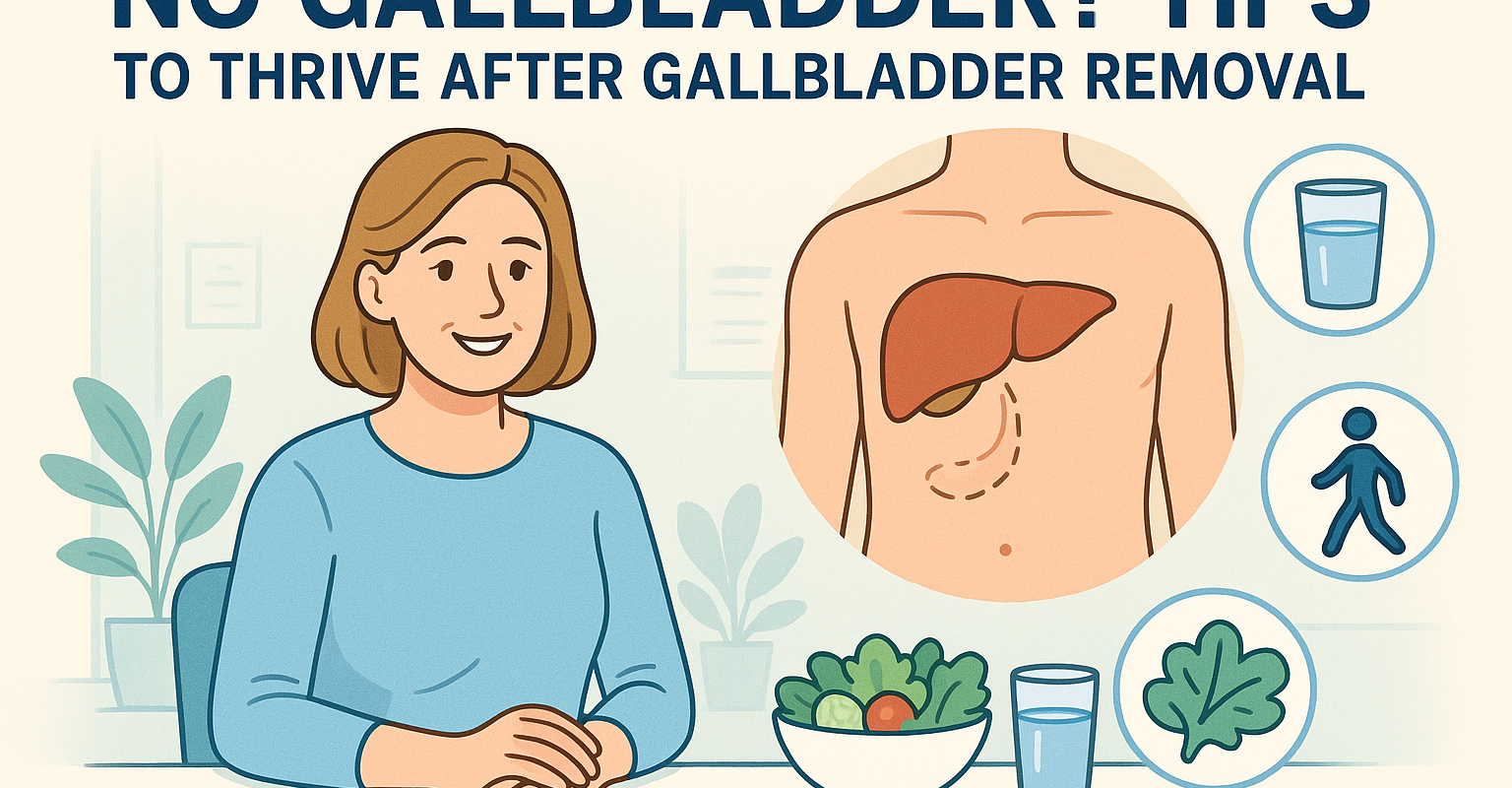Having your gallbladder removed—commonly known as a cholecystectomy—is a significant event. While it’s one of the most frequently performed surgeries in the United States, many people are surprised by the lifestyle changes that can follow. The gallbladder may be small, but it plays an important role in digestion—particularly in the breakdown of dietary fats.
At Gastroenterology Medical Clinic in Folsom, CA, we regularly help patients navigate life after gallbladder removal. The good news is that it’s absolutely possible to thrive without a gallbladder. By making small, intentional changes to your eating habits, activity levels, and digestive health, you can reduce post-surgical symptoms and feel your best.
Here are eight essential tips to help you live well after gallbladder surgery.
1. Eat Smaller, More Frequent Meals
One of the most effective strategies post-surgery is to avoid large, heavy meals. Your gallbladder’s job was to store bile and release it in response to fatty foods. Without it, your liver still produces bile, but it flows into your digestive system at a steady pace—regardless of what you eat.
Why it matters:
Without timed bile release, large or fatty meals can overwhelm your digestive tract and cause bloating, diarrhea, or cramping.
Try this:
- Eat 4–6 small meals throughout the day.
- Keep portion sizes moderate.
- Don’t skip meals—it can lead to overeating later.
At Gastroenterology Medical Clinic – Folsom, we help patients build meal plans that promote healthy digestion and energy balance.
2. Limit High-Fat Foods — But Don’t Go Fat-Free
You don’t need to eliminate all fats from your diet, but you do need to choose fats wisely.
Good fats:
- Olive oil
- Avocados
- Nuts and seeds (in small portions)
- Fatty fish like salmon or mackerel
- Fats to limit or avoid:
- Fried foods
- Sausages and bacon
- Heavy cream sauces
- Processed snacks
Eating the right fats in small amounts helps your body absorb fat-soluble vitamins like A, D, E, and K. Our clinic in Folsom offers personalized guidance for post-surgery nutrition—especially when it comes to fat intake.
3. Add Fiber—But Do It Gradually
Fiber helps keep your digestion moving smoothly, prevents constipation, and feeds healthy gut bacteria. However, introducing too much fiber too quickly can result in gas, bloating, or discomfort—especially after gallbladder surgery.
Start with gentle sources:
- Cooked vegetables
- Oatmeal
- Brown rice
- Ripe fruits like bananas and apples (without the skin)
Increase fiber gradually, and drink plenty of water to help your system adjust.
4. Monitor for Bile Acid Diarrhea
Some people experience bile acid diarrhea after gallbladder removal. This happens when bile, which is now constantly flowing, irritates the intestinal lining.
Symptoms include:
- Frequent loose stools
- Urgent bathroom needs
- Cramping after meals
If this occurs, try a low-fat diet and see if symptoms improve. At Gastroenterology Medical Clinic in Folsom, we may also recommend bile acid binders or other medications to help manage this condition.
5. Consider Digestive Enzymes or Ox Bile Supplements
For some people, digestion remains sluggish or inconsistent even months after surgery. In such cases, digestive enzyme supplements or ox bile may help your body break down fats more efficiently.
However, these supplements aren’t right for everyone. Always consult a gastroenterologist before starting anything new. Our Folsom-based team can help you determine if these options are appropriate for you.
6. Keep a Food and Symptom Journal
Post-surgical digestion is different for everyone. Foods that one person tolerates may cause issues for another. A food and symptom journal can help you:
- Identify trigger foods
- Track bowel habits
- Monitor improvements over time
This simple habit can be incredibly empowering and is something we often recommend to patients at our Folsom clinic.
7. Support Your Gut Health
A healthy gut is your best ally in digestion. Gallbladder removal may shift your gut microbiome, so nurturing it becomes even more important.
How to support gut health:
- Eat probiotic-rich foods like yogurt, kefir, and sauerkraut
- Include prebiotic foods like garlic, onions, and oats
- Stay hydrated
- Avoid excessive use of antibiotics or over-the-counter antacids
We offer gut health evaluations and nutritional counseling right here in Folsom for those who want to take a deeper dive into optimizing their digestive wellness.
8. Ease Back into Physical Activity
After gallbladder surgery, movement helps stimulate digestion and prevent constipation. Just make sure to take it easy, especially during the first few weeks.
Start with:
- Walking
- Light stretching
- Breathing exercises
Avoid:
- Heavy lifting
- High-intensity workouts
- Abdominal strain until cleared by your doctor
At Gastroenterology Medical Clinic – Folsom, CA, we encourage post-surgical patients to move at their own pace and listen to their bodies during recovery.
Final Thoughts
Living without a gallbladder doesn’t mean living with constant digestive issues. With the right knowledge, a few lifestyle adjustments, and support from a qualified medical team, you can enjoy a healthy, vibrant life post-surgery.
Whether you’re weeks into recovery or still dealing with long-term symptoms, Gastroenterology Medical Clinic in Folsom, CA is here to help. We provide compassionate, personalized care to help you feel your best—every step of the way.




